Books &Commentary 29 Nov 2011 06:35 am
Overdue Review – The Motion Picture Cameraman
- A couple of weeks ago, I reviewed the E.G. Lutz book, Animated Cartoons. I was also intrigued by another of his many books, The Motion Picture Cameraman, and quickly ordered a copy from Amazon. This 1927 book is obviously dated, but like his earlier book, Animated Cartoons, it’s so filled with information that most of it has held up over the years. Of course, today everything is digital, so there’s no need for a lot of information about film and film stocks, but there’s still of lot to be learned for the aspiring motion picture photographer.
This is all illustrated by detailed drawings by Lutz, himself.
The book starts out talking about the camera. Lutz, at first, sticks to the simplest, the box camera, and moves on from there ultimately comparing and contrasting a number of different makes, at the time.
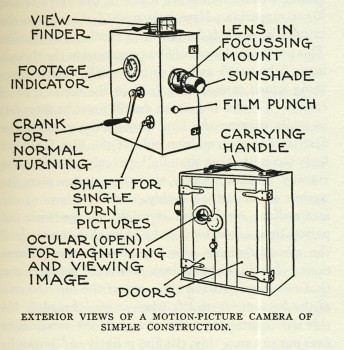
The simple box camera
The book offers lots of charts and details that are pertinent to the subject. Everything from filming outdoors “When subjects have a preponderance of red and yellow hues they require a large stop and a long exposure to procure any kind of result. In subjects where blue and violet prevail a smaller stop will do.” Naturally, there’s a chart analyzing daylight hours at different months of the year.
He has an entire chapter on shooting within a studio of the period: “A Motion-Picture studio is a huge structure with glass roof and sides in which artificial lights supplement daylight, or are used exclusively for the illumination.” Certainly, this is not what studios were even five years on. They would soon be doing color, and they would need to very carefully control the conditions for photography.
How quickly it all changed and how casually we shoot now with our digital cameras.
He has a chapter on effects photography covering everything from glass matte shots to split screen photography. Many of these effects are illustrated.
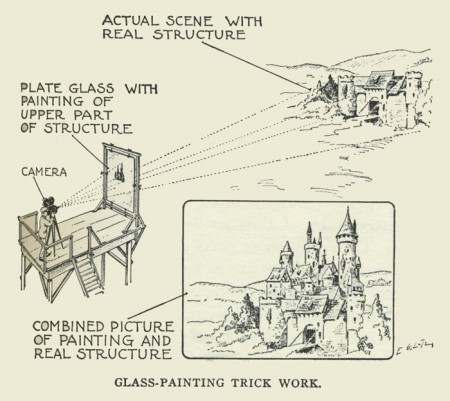
The glass matte shot explained in a very clear way
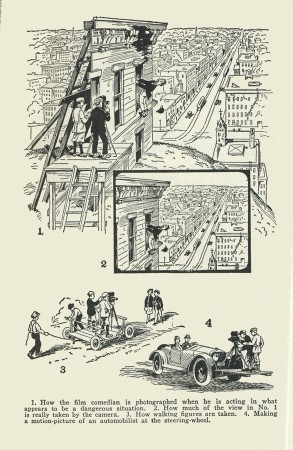
How people hang precariously
from clocks in silent films (see Hugo).
He has an entire chapter on how titling is done, and there’s another chapter on “‘One Turn, One Picture’ Work”, or as we call it “animation.” The “one turn, one picture” means that you crank the camera only once around to film one image. It took 16 cranks to shoot one foot of film, or one second in the silent pictures. Film ultimately went to 24 frames per second to accommodate sound photography.
In that animation chapter, he analyzes the different types of animation from cut-out to stop-motion to time-lapse photography. It’s very succinct and well informed, as we might expect from the author of the first how-to book on the subject.
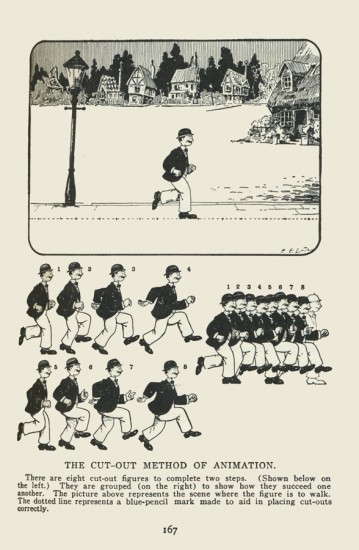
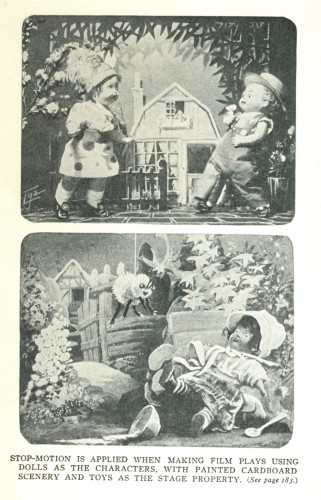
Puppets, prior to the ball and joint method
were just strung together with strong wire.
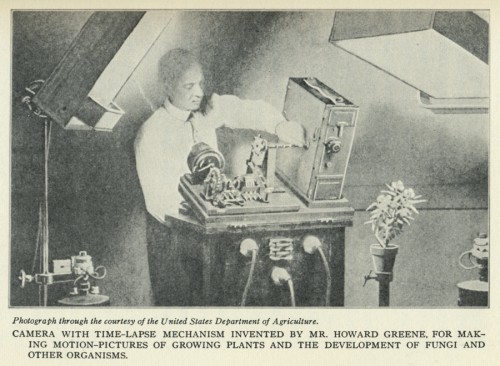
This man is shooting a time-lapse film although
it looks as though he were creating Frankenstein’s monster.
Ultimately, we even get instructions on how to develop the film. Fortunately, labs were created for that purpose and handle such an important part of the process today.
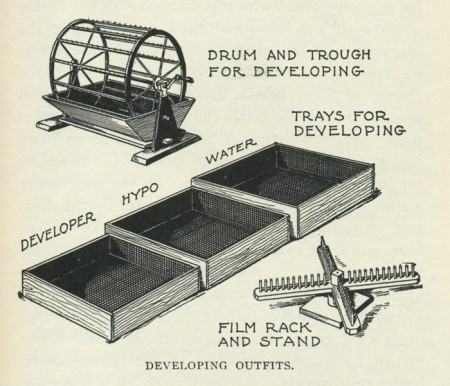
Equipment needed to develop your own film.
I guess the book seemed valuable for me because I have an interest in the process, both that of the past as well as that of today. I’m not sure everybody has that interest, but this book will serve you well and entertain if you do.
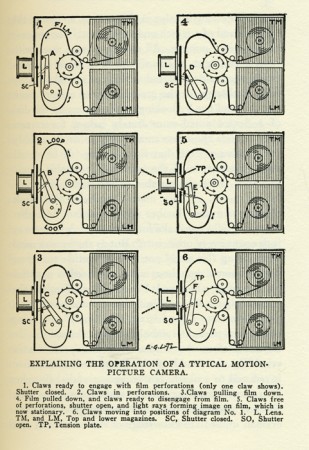
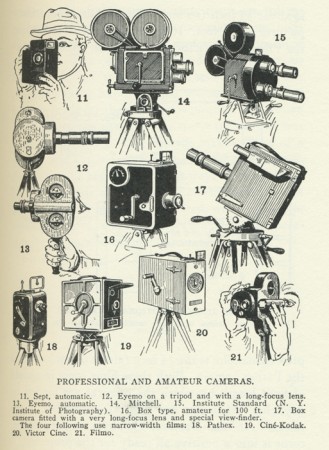

on 29 Nov 2011 at 1:49 pm 1.slowtiger said …
I know this book from my hometown library! I still have some copies of the illustrations.
An earlier example would be german film pioneer, Guido Seeber’s “Der praktische Kameramann” from 1924. Fewer illustrations, though, but the one which impressed me most was about how to stage a car accident: “Film pedestrian and approaching car until contact. Stop camera. Replace the pedstrian with an invalid (easy to find after the war) and an artifical leg. Continue filming.” (from memory)
on 29 Nov 2011 at 5:26 pm 2.RodneyBaker said …
These books by E.G. Lutz are real treasures. Lutz’s books really opened my eyes to the wealth of knowledge that was already available in animation pre-Disney. My reaction was, “Wow, I didn’t know they knew that!” It’s no wonder this book was said to have been studied thoroughly by Walt Disney.
Thanks especially for a look into ‘The Motion Picture Cameraman’ as I don’t yet have a copy of that book.
on 04 Dec 2011 at 2:51 pm 3.Tom Sito said …
Very cool. I think I’ll pick up a copy.
on 06 Dec 2011 at 1:03 pm 4.Howard Beckerman said …
Hi Michael,
Good seeing you at the Fierlinger event the other night. News about Vinnie
Caferelli’s passing really stunned me. We knew each other 51 years. I agree with you about being interested in film techniques ala E.G. Lutz. I still enjoy looking at his books. Which brings me to the point. You mention all these ancient things and have never mentioned my book “Animation the Whole Story.” You may not have a copy of it or do have one but don’t really like it, but we use it at SVA. It is also a great companion to Richard William’s great book. He covers much about character animation but touches little on the rest of the traditional animation process or on animation history, which my book does very thoroughly. It’s available on Amazon and interested folks can read about it on my website howardbeckerman.com
Best to you and Heidi.
on 06 Dec 2011 at 1:08 pm 5.Michael said …
Your book, Howard, is on my list to review. I’ll get to it in the next week, I think, if some other emergency post (like Vinnie’s death) doesn’t pop up.